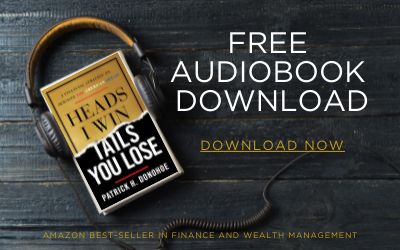Life moves fast—and so do your financial responsibilities. Whether you’re just starting your career, building a family, or nearing a major life transition, one question eventually surfaces: When should I get life insurance? It’s a simple question with powerful implications. At Paradigm Life, we believe that life insurance isn’t just about knowing when to get life insurance and preparing for the worst—it’s about positioning yourself to thrive financially throughout every stage of life.
When approached strategically, especially through Whole Life Insurance, this decision becomes more than just a safety net—it becomes the foundation of your personal wealth strategy.
Many people delay getting coverage, thinking it’s something they’ll need “later.” But what if later comes too late? And what if getting life insurance early actually helps you build wealth faster, access capital more easily, and pass on a legacy with confidence?
This guide will help you understand:
- Why timing matters when it comes to life insurance
- The differences between Whole Life and Term Life
- What to consider before purchasing a policy
- How your age, goals, and life stage impact the right timing
- Answers to common questions.
Whether you’re curious, confused, or finally ready to take action, this guide will walk you through how to make the smartest decision—not just for your protection, but for your financial independence.
When Is the Best Time to Get Life Insurance?

Let’s cut to the chase: The best time to get life insurance is before you need it. That’s not just a safety-first mindset—it’s a strategic decision that can save you money, expand your options, and lay a strong foundation for your personal economy.
Why “Sooner” Is Smarter
The younger and healthier you are, the more favorable your premiums and the broader your policy options. More importantly, starting early allows you to leverage life insurance not just for protection—but for growth.
When You Should Absolutely Consider It:
- You’re young and healthy: Lock in lower premiums and future-proof your insurability.
- You’re starting a family or have dependents: Create financial security and long-term support for those who count on you.
- You’re building wealth or launching a business: Use Whole Life as a liquid asset and access capital without depending on banks.
- You’re planning for retirement: Leverage Whole Life’s Volatility Buffer Strategy to protect income from market risks.
- You’re thinking about your legacy: Whole Life offers tax-free wealth transfer, liquidity, and probate avoidance.
Reframing the Question
Instead of asking “When do I need life insurance?”, ask:
“What do I want my life insurance to help me accomplish?”
When you view life insurance as a multifunctional wealth tool, the answer becomes clear: the earlier, the better.
What this means for you is that by acting now—not later—you’ll have more control, more certainty, and more strategic options to use life insurance as a powerful part of your financial future.
Why Timing Matters in Life Insurance
When it comes to life insurance, time is your most valuable asset—not just because of the cost, but because of what you can do with a properly designed policy over time. Waiting too long can limit your options, increase your premiums, and even put your insurability at risk.
Let’s break down why when you get life insurance matters just as much—if not more—than the type of policy you choose.
1. Younger = Lower Premiums
One of the biggest advantages of starting early is locking in your premiums while you’re young and healthy. Life insurance companies assess risk based on age and health. The earlier you get coverage, the less risk they assume—which means you pay significantly less over the life of the policy.
For example, a 25-year-old in good health might pay a fraction of what a 45-year-old would pay for the same level of coverage.
2. Better Health = More Insurability
Getting life insurance early protects your insurability—your ability to qualify for coverage. Illnesses and health issues can arise unexpectedly. Locking in a policy before those concerns develop can guarantee access to life insurance for life, especially with Whole Life.
3. Compound Growth Starts Sooner
With Whole Life Insurance, cash value grows over time. The sooner you begin, the longer your money has to compound—tax-deferred and accessible through policy loans.
Think of it like planting a tree: the earlier you plant it, the more shade—and fruit—it provides in the future.
The earlier you act, the more powerful your life insurance policy becomes as a financial tool—not just protection.
4. Aligning Life Insurance with Your Financial Strateg
Timing also determines how well your policy fits into your overall wealth strategy. At Paradigm Life, we don’t see life insurance as a standalone product—it’s a tier-one asset in your Hierarchy of Wealth™ and a foundational tool in The Perpetual Wealth Strategy™.
Early integration means:
- More cash flow flexibility
- More time to build tax-efficient wealth
- More options for funding education, real estate, or even business ventures
Life Insurance by Life Stage

Your need for life insurance—and how you use it—evolves as you move through different stages of life. At Paradigm Life, we help clients align their coverage with their current phase, whether it’s growth, income, or legacy. Here’s how to know what’s right for you, right now.
1. Life Insurance for Young Adults
When you’re young, healthy, and just starting out, life insurance may seem like a low priority. But this is actually the most strategic time to act.
Why it matters:
- Premiums are at their lowest
- Health qualifications are usually optimal
- It protects your future insurability
- It jumpstarts cash value growth for future opportunities
Scenario:
Imagine locking in a policy at 25 and accessing that cash value at 35 to buy your first rental property—without going to a bank.
Acting early gives you long-term financial advantages that compound with every passing year.
2.. Before Starting a Family
Starting a family is a major life milestone—and often a wake-up call for the need to protect income and provide for dependents.
Why it matters:
- Replaces your income if something happens to you
- Helps your partner or children maintain quality of life
- Whole life can fund college, housing, or even future businesses
Strategy tip: This is the ideal time to implement The Family Bank Strategy—a system that lets your money grow in a policy while being used elsewhere in your financial life.
3. During Major Life Events
As life unfolds, your need for protection and liquidity grows. Whether it’s buying a home, starting a business, or transitioning careers, these moments are the perfect time to re-evaluate your life insurance.
Examples:
- A mortgage can last 15–30 years—term life may be a fit here
- Business owners can use whole life to secure succession plans or executive benefits
Strategy alignment: Use a blended strategy—combining whole life for long-term wealth with term coverage for short-term protection.
D. Later in Life (Pre-Retirement or Legacy Phase)
Even as retirement approaches, life insurance still plays a vital role—but the purpose shifts.
Why it matters:
- Whole life policies can supplement retirement income through policy loans (Volatility Buffer Strategy)
- It ensures a tax-free inheritance for your family
- Avoids probate and creates liquidity for estate costs
Even in your later years, life insurance can provide certainty, flexibility, and a lasting legacy.
IV. Whole Life vs. Term Life: Choosing the Right Policy
When people think of life insurance, they often ask: “Should I get term or whole life?” The answer isn’t one-size-fits-all—but understanding the differences can empower you to make the right choice for your financial goals, lifestyle, and life stage.
At Paradigm Life, we view this choice through the lens of strategy—not just affordability.
Whole Life Insurance: A Strategic Asset
Whole life isn’t just about a death benefit—it’s a living asset that can:
- Build guaranteed cash value
- Earn annual dividends (from mutual insurance companies)
- Be accessed tax-efficiently through policy loans
- Provide liquidity for investments, emergencies, or income needs
Why it’s powerful:
- Works best as a Tier 1 asset in the Hierarchy of Wealth™
- Can be used in The Family Bank, Wealth Maximization Account, or Volatility Buffer Strategy.
- Designed to stay with you for life
As a result, your policy becomes more valuable over time—functioning as a tax-favored, flexible financial tool you can use while you’re alive.
Term Life Insurance: Simple, Short-Term Protection
Term life offers temporary coverage—typically 10, 20, or 30 years. It’s designed to provide a death benefit only, and only during the term selected.
Pros:
- Lower initial premiums
- Great for covering specific risks (like a mortgage or income replacement)
- Can be converted to whole life in some cases
Limitations:
- No cash value
- Coverage expires
- Premiums increase dramatically if renewed later
Strategic Comparison: Side-by-Side
| Feature | Whole Life Insurance | Term Life Insurance |
| Duration | Permanent (lifetime coverage) | Temporary (10–30 years) |
| Cash Value | Yes – grows over time | No |
| Premiums | Level premiums for life | Low initially, rises upon renewal |
| Use While Living | Yes – access via loans | No |
| Dividends (if from mutual co.) | Yes – enhance cash value and coverage | No |
| Ideal Use | Wealth building, legacy, financial leverage | Income protection, debt coverage |
So… Which One Is Right for You?
Ask yourself:
- Do I want a long-term strategy or just short-term protection?
- Would access to capital through cash value be useful?
- Is legacy and liquidity part of my financial plan?
At Paradigm Life, many of our clients blend both: using term to cover temporary needs and whole life to build long-term wealth.
Life insurance isn’t either/or—it’s about building a strategy that supports you now, in the future, and beyond.
What to Consider When Getting Life Insurance

Choosing life insurance isn’t just about picking a number or a premium—it’s about understanding your goals, protecting your human life value, and creating a strategy that supports your entire financial journey.
Here’s what to consider before you buy, upgrade, or structure your policy.
1. Your Life Stage and Financial Goals
Your needs evolve over time. Are you:
- Just starting your career?
- Growing a family?
- Building a business?
- Planning for income during your later years?
Understanding your current phase—Growth, Income, or Legacy—is essential for choosing the right type and amount of coverage.
2. Cash Flow and Premium Design
Premiums should fit your cash flow strategy, not strain it. The goal is to design a policy—especially a Whole Life policy—that maximizes early cash value while staying within your comfortable spending range.
At Paradigm Life, we often use The Wealth Maximization Account to structure policies that:
- Maximize liquidity in the early years
- Avoid MEC status (for tax efficiency)
- Accelerate long-term cash value growth
3. Insurability and Health Considerations
Your health plays a huge role in life insurance eligibility and pricing. If you’re young and healthy, you’ll qualify for better rates and more options.
Waiting can limit your choices or increase costs—especially if health conditions develop over time.
4. Policy Flexibility and Living Benefits
What happens if you need access to cash before retirement? Or want to fund an investment, opportunity, or emergency?
Whole Life Insurance offers:
- Tax-deferred growth
- Tax-favored withdrawals through policy loans
- Guaranteed access to capital (regardless of market conditions)
5. Strategy Alignment: The Big Picture
The right life insurance policy should:
- Fit within your Hierarchy of Wealth™
- Support your Perpetual Wealth Strategy™
- Complement your cash flow, risk tolerance, and lifestyle
Life insurance isn’t a one-time decision—it’s a strategic tool that, when structured correctly, supports every financial milestone ahead.
FAQs: When to Get Life Insurance
At what age should you get life insurance?
The ideal time is as early as possible, especially when you’re young and healthy. This is when you’ll:
- Lock in the lowest possible premiums
- Qualify for the broadest policy options
- Start building cash value earlier if choosing Whole Life
- Protect your insurability in case health conditions arise later
Tie-Down: What this means for you is more flexibility, more savings, and a stronger financial foundation over time.
How many years should you take out life insurance for?
That depends on your objectives.
- Term Life Insurance is best for short-term needs like mortgage coverage or income replacement. Terms typically range from 10 to 30 years.
- Whole Life Insurance is permanent. It never expires and provides lifetime benefits like guaranteed cash value growth and a tax-free death benefit.
Tie-Down: What this means for you is that Whole Life isn’t just about how long—it’s about building lifelong financial certainty.
Do I get my money back if I outlive my life insurance?
- With Term Life, you generally don’t get your premiums back—unless you purchase a “return of premium” rider (which comes at a higher cost).
- With Whole Life, yes—you build equity in the form of cash value that you can use during your lifetime through tax-efficient policy loans or withdrawals.
Tie-Down: What this means for you is that Whole Life Insurance gives you more than peace of mind—it gives you a living, growing asset.
What’s the best life insurance alternative?
We encourage a reframe here. It’s not about finding an “alternative”—it’s about choosing the right strategy.
Whole Life Insurance—when properly structured—functions as:
- A Tier 1 asset
- A financial reservoir for opportunities or emergencies
- A legacy tool that avoids probate and transfers wealth tax-free
- A key player in strategies like the Family Bank or Volatility Buffer
You don’t need an alternative—you need a customized plan that integrates the most powerful tools available.
Aligning Life Insurance with Your Wealth Strategy
Life insurance isn’t just about what happens if you’re not here—it’s about what’s possible while you are.
When structured intentionally, Whole Life Insurance becomes more than coverage. It becomes:
- A living financial asset
- A permission slip to enjoy your wealth now
- A powerful tool to create legacy and liquidity
- A cornerstone of your Hierarchy of Wealth™
Timing is everything. The best time to get life insurance is before you need it—when it can work hardest for you.
By taking action today, you’re not just securing protection—you’re unlocking access, control, and strategic growth within your personal economy.
Ready to take the next step?
Schedule a FREE strategy session with a Paradigm Life Wealth Strategist.
We’ll help you determine the right time and right policy, Integrate it into your broader wealth strategy, and turn life insurance into a lifetime asset







